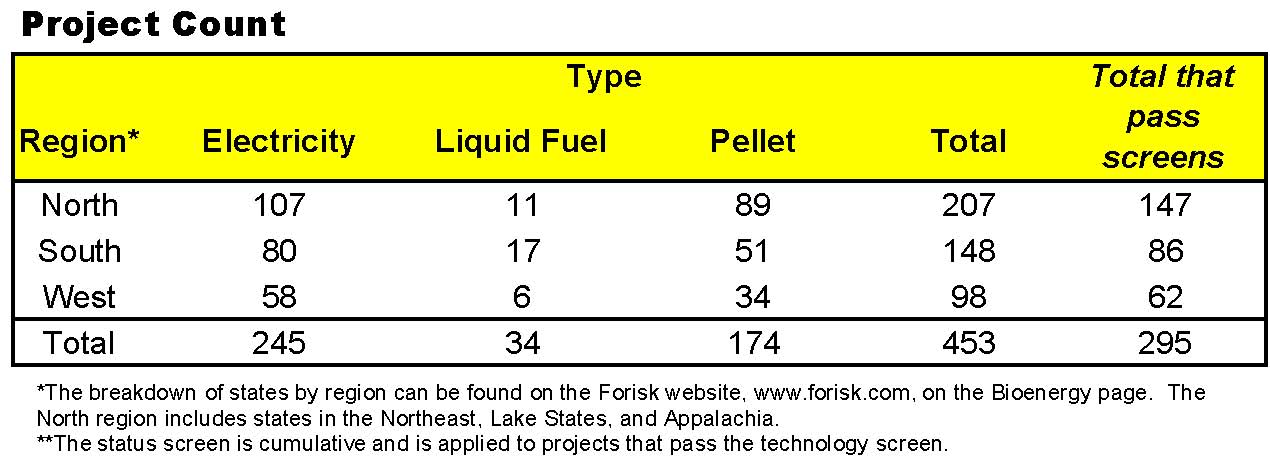The May issue of Wood Bioenergy US indicates that, as of May 25, 2011:
- The continental US has 453 wood-consuming, announced and operating bioenergy projects.
- In total, these projects represent potential, incremental wood use of 130 million green tons/year by 2021.
- Based on Forisk analysis, projects representing only 71.1 million tons/year pass basic viability screening.
This is the first time projected demand has exceeded 70 million green tons within ten years. In total, the pass rate of projects is 65%. Of the 453 total projects evaluated, 54% are associated with cogeneration and/or wood-to-electricity. The number of liquid fuel projects declined from 36 to 34 since last month. Click here to download the free summary.
The decline in wood biofuels projects is consistent with the results of the study we published with the Schiamberg Group – Transportation Fuels from Wood: Investment and Market Implications of Current Projects and Technologies. This research includes the status of 36 cellulosic biofuel projects, estimated commercialization timelines for 12 technology approaches, and implications for bioenergy and timberland investors in the US. How was the study conducted?
Each technology process was evaluated based on its ability to produce at commercial scale and its estimated yields. Many of these estimates came from firms, which we compared to proven pilot and demo scale projects. Our experience in benchmarking information from private firms is that it can prove unreliable and overly optimistic. Range Fuels is an example of a project we’ve covered since 2009 using similar criteria, and it basically played out as expected based on the criteria used.
For the liquid fuels study, those two elements, ability to produce at commercial scale and estimated yields, can be estimated given existing projects today and provide the basis for a continuum of both technologies and projects. The key difference we find in comparing notes with private firms is that a successful pilot project is deemed “success” while that would be insufficient from our view. The critical elements are ability to produce at commercial scale and yields.
For more information about this study, please click here.


Leave a Reply